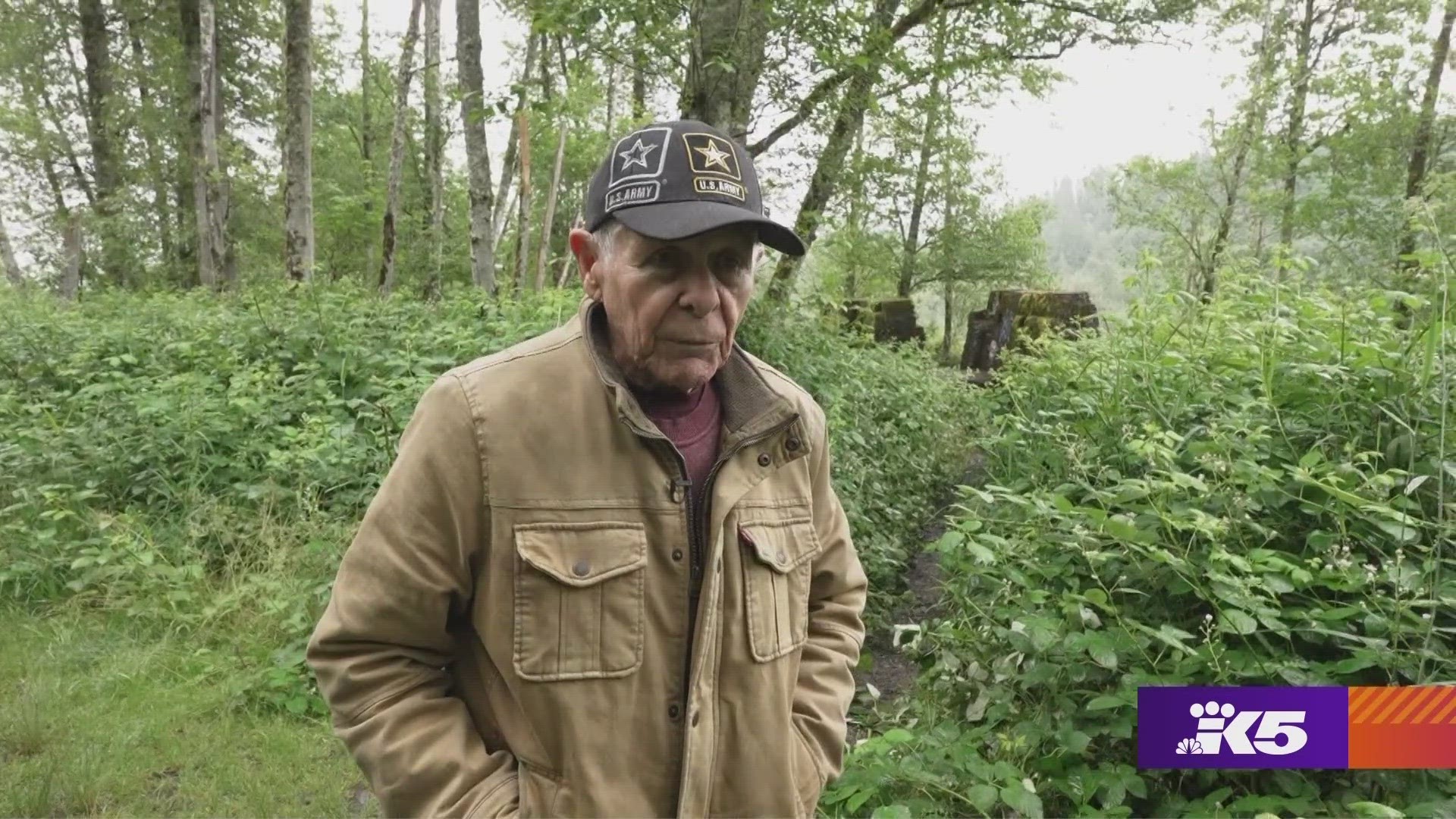BLACK DIAMOND, Wash. — This forest has tales to tell. Stories of a company town built on coal.
"There were buildings all over here," Black Diamond Historical Society archivist Dave Watson said as he gestured toward a wooded hillside.
The mining community of Franklin came to life in the 1880s and once numbered more than 1,000 residents.
Watson's colleague, Don Mason, knows so much about this once-bustling place that they call him the "Mayor of Franklin." Mason seems to be able to still see the hotel, homes, and mining equipment as he gazes into the trees.
"There was a spool across," Mason said, pointing into the distance, "and a big drum."
Franklin was, literally, the end of the line.
"The railroad was the only way to get in and out of Franklin," Mason said.
Miners worked, lived, and died here. In 1894, 37 men perished from smoke inhalation in the town's largest mine.
"They couldn't get the fire out," Mason said.
Watson described the scene of doomed workers hunkering in the smoke-filled mine.
"Had a father and a son holding each other," he said, "All of them got together."
It was the worst mining disaster in King County history. The cable that hauled equipment from that mine still remains.
"This hasn't moved since that disaster," Watson said, gesturing toward the rusted but largely intact cable.
A nearby air shaft pierces the earth nearly as deep as the Smith Tower is tall. The journey of a rock dropped into the hole by geologist Zachary Pratt takes more than four seconds to end with a bang on the stone floor below. It seems like an eternity.
Franklin welcomed a wide variety of European immigrants, and for a time, a larger number of African Americans than Seattle.
"They worked side-by-side with the other, white miners. And in this country that's something," Mason said.
But the coal industry moved on, and by 1940, so did the residents of Franklin. Today, all that remains are the relics of a once-lively town and stories whispered on the wind.

